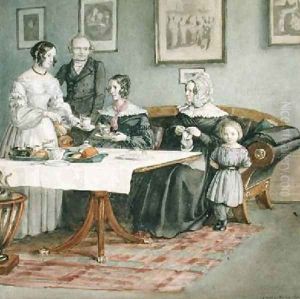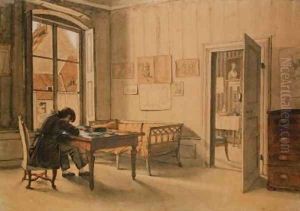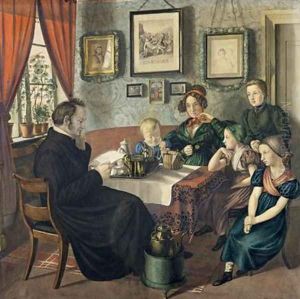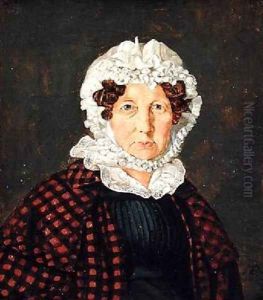Carl Julius Milde Paintings
Carl Julius Milde was a German artist and conservator, born in 1803 in Lübeck, a city renowned for its rich cultural and artistic heritage. Throughout his career, Milde made significant contributions to the field of art restoration and was particularly noted for his expertise in the conservation of wall paintings and medieval artworks. His work extended beyond the confines of his native Germany, influencing conservation practices across Europe.
Milde's education and early career were rooted in the study of art and architecture, fields that provided a solid foundation for his later specialization in restoration. He was deeply influenced by the Romantic movement, which was prevalent during his formative years. This influence is evident in his approach to conservation, which emphasized the importance of preserving the emotional and spiritual essence of artworks, in addition to their physical integrity.
Throughout his career, Milde was involved in several high-profile restoration projects, including work on frescoes in churches and historic buildings. His approach to conservation was revolutionary at the time; he advocated for minimal intervention, aiming to preserve as much of the original material and aesthetic as possible. This philosophy was in stark contrast to the more invasive restoration practices commonly employed during the 19th century, which often altered the original appearance of artworks.
Milde's contributions to art conservation were not limited to his practical work. He was also an educator, sharing his knowledge and techniques with a new generation of conservators. His writings on conservation practices helped to establish guidelines that influenced the field long after his death in 1875.
Despite the significant impact of his work, Carl Julius Milde remains a somewhat underrecognized figure outside the field of art conservation. However, his legacy lives on through the artworks he preserved for future generations and the conservation principles he helped to establish, which continue to inform the practice of art restoration today.



